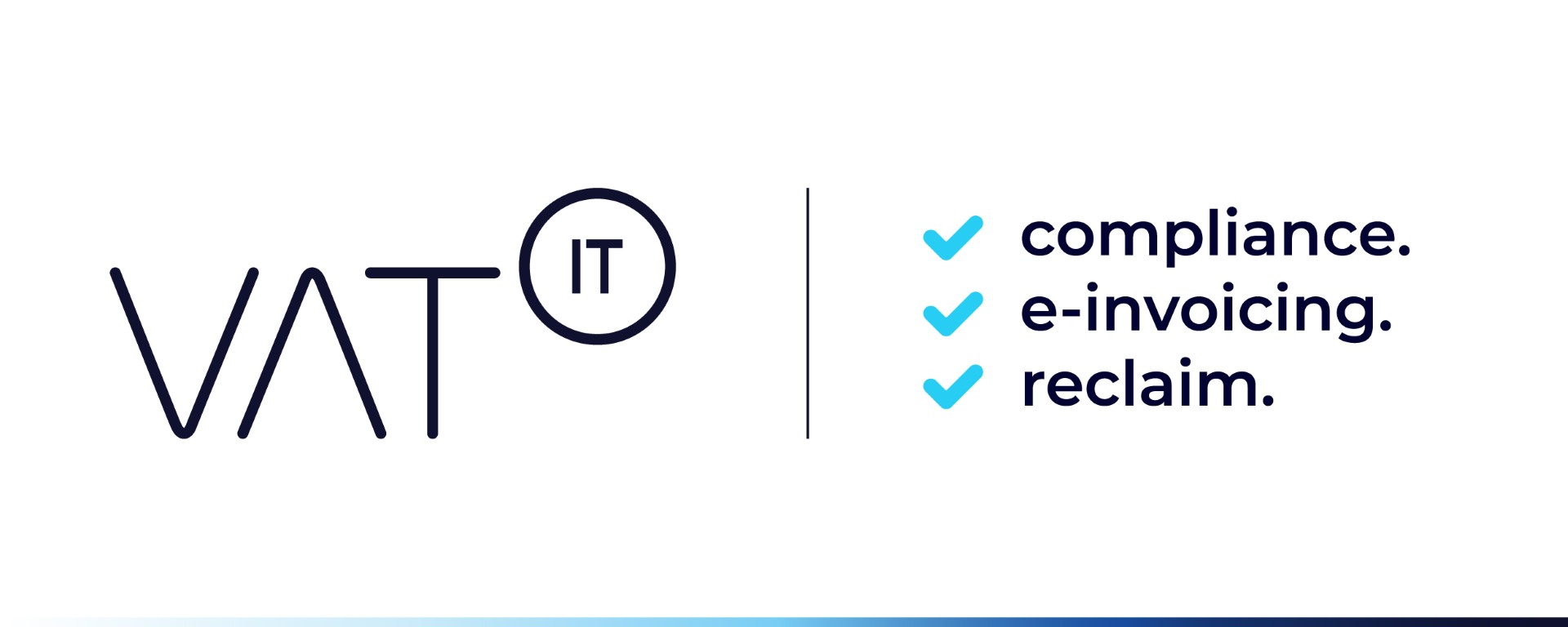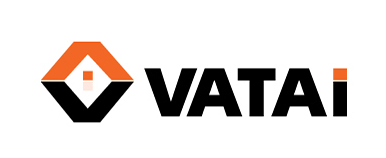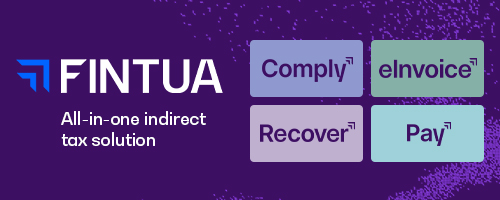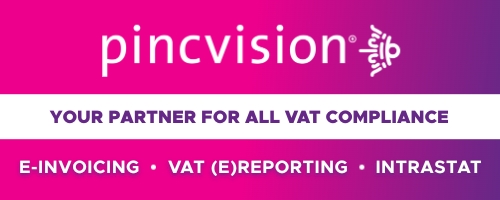Last update: October 26, 2025
SUMMARY
INDEPTH ANALYSIS
Implementation Timeline (2024–2027): The UAE is rolling out e-invoicing in phases under its new Electronic Invoicing System (EIS):
- 2024–Early 2025: Legal framework established. Federal Decree-Law No. 16 of 2024 amended the VAT law to enable mandatory e-invoicing. In September 2025, the Ministry of Finance issued Ministerial Decision No. 243 of 2025 (outlining the e-invoicing system) and Ministerial Decision No. 244 of 2025 (phased implementation). [deloitte.com]
- Accreditation Phase (Late 2024): The Ministry of Finance began accrediting e-invoicing service providers (ASPs) in late 2024, creating an approved network for the system. [suntecgroup.com]
- Pilot Program (July 1, 2026): A limited pilot (“Taxpayer Working Group”) launches on 1 July 2026 with selected businesses under FTA supervision. This allows testing of the system in real conditions. From the same date, voluntary adoption is open to any business that wishes to opt in early. [deloitte.com]
- Phase 1 (Large Businesses – Jan 1, 2027): Businesses with annual revenue ≥ AED 50 million must comply first. They are required to appoint an Accredited Service Provider by July 31, 2026 and implement mandatory e-invoicing by January 1, 2027. This gives large companies a six-month lead time after choosing an ASP to integrate systems. [deloitte.com]
- Phase 2 (Small/Medium Businesses – July 1, 2027): VAT-registered businesses with revenue < AED 50 million come next. They must onboard an ASP by March 31, 2027 and start issuing e-invoices by July 1, 2027. This captures all remaining VAT-registered companies (except those only doing B2C, as noted below). [deloitte.com]
- Phase 3 (Government Entities – Oct 1, 2027): UAE government entities that are subject to VAT must comply as well. They need to have an ASP by March 31, 2027, with mandatory e-invoicing from October 1, 2027. This phase ensures B2G (business-to-government) invoicing is covered. [deloitte.com]
- Beyond 2027: Business-to-Consumer (B2C) transactions are currently excluded from the mandate until further notice. The initial rollout focuses only on B2B and B2G. B2C requirements could be introduced later via a separate decision, but no dates have been set as of 2025. [deloitte.com], [grantthornton.ae] [grantthornton.ae]
(Note: The phased timeline gives businesses time to prepare. By the end of 2027, virtually all VAT-registered businesses engaging in B2B or B2G supplies must be using e-invoicing. Non-VAT-registered businesses are outside the scope.)
Scope of Transactions (What’s Covered): The e-invoicing mandate applies to most taxable transactions in the UAE, with a focus on business-related sales:
- Domestic B2B Invoices: All business-to-business transactions that are subject to UAE VAT must be issued as electronic invoices under the new system. This includes standard-rated and zero-rated B2B supplies within the UAE. E-invoices will be required for these transactions to allow input VAT recovery and audit trail. [ay-uae.com]
- B2G Invoices: Business-to-government invoices (where a business sells to a government entity) are also in scope. Government entities (as buyers) will be part of Phase 3 (by late 2027) and will both send and receive e-invoices via the system. [ay-uae.com]
- Cross-Border Transactions: The mandate includes cross-border B2B supplies as well. If a UAE VAT-registered business exports goods or services (or imports, in terms of the supplier’s invoicing), those invoices should be electronic. The system is designed to handle cross-border e-invoices, leveraging international standards (Peppol) to ensure interoperability. (This focus on cross-border e-invoicing aims to enhance transparency in trade and reduce fraud in imports/exports.) [ay-uae.com] [suntecgroup.com]
- Excluded Transactions: B2C (business-to-consumer) sales are excluded from mandatory e-invoicing at the outset. Retailers and other businesses can continue issuing paper or point-of-sale receipts for consumer sales as per current practice. Additionally, certain sectors/transactions have specific exemptions under Article 4 of MD 243 (2025): for example, government entities’ sovereign (non-commercial) activities are excluded, as are specific transportation and financial services. The exclusions include: [grantthornton.ae]
- Passenger air transport (international flights) where an electronic ticket is issued – these are temporarily exempt from e-invoicing, recognizing that airlines already use e-ticketing systems. (Ancillary airline services issued via Electronic Miscellaneous Documents are similarly exempt.) This exemption for air transport is time-limited to 24 months from the EIS start, after which these may need to comply. [cleartax.com]
- International transport of goods by air (air waybills) – likewise exempt for 24 months. [cleartax.com]
- Certain financial services that are VAT-exempt or zero-rated – e.g. interest on loans, life insurance – do not require e-invoices. (Such services often don’t have VAT or have special invoicing norms.) [cleartax.com]
- Any other category that may be decided by the Minister of Finance – a catch-all for future exclusions. [cleartax.com]
- In summary: Unless a transaction falls under an explicit exemption, all sales between businesses (and to government) by a VAT-registered person should be carried out with a compliant e-invoice. The scope is broad – covering all VAT-registered businesses’ transactions in the UAE (domestic and cross-border) except consumer sales and the limited exemptions above. Even zero-rated B2B supplies (exports) require e-invoices now, as prior simplified invoice allowances have been removed. [deloitte.com], [deloitte.com] [grantthornton.ae]
Taxable Persons in Scope: The e-invoicing mandate targets VAT-registered persons in the UAE:
- All VAT-Registered Businesses: Any person or entity registered for VAT (i.e. holding a Tax Registration Number) and conducting business in the UAE is within scope for e-invoicing requirements. This includes companies, partnerships, sole proprietors, and public sector entities registered for VAT. [deloitte.com]
- Phased by Turnover, Not Optional: The phased rollout (by revenue thresholds) is only a timing mechanism. Eventually large and small VAT payers alike must comply – smaller businesses get a few extra months to implement, but no category of VAT-registered business is permanently exempt by size. For example, a small business under AED 50M still must start e-invoicing by mid-2027. The AED 50M threshold was solely to stage the implementation, and it is calculated on total annual revenue (including B2C sales, even though those particular invoices aren’t mandated). [grantthornton.ae]
- Businesses with Only B2C Sales: A business that is VAT-registered but sells exclusively to consumers (no B2B clients) is presently out of scope for mandatory e-invoicing. Such a company wouldn’t be forced into e-invoicing in 2027. However, it still counts its turnover for the threshold – meaning if it’s ≥ AED 50M and later the government extends e-invoicing to B2C, it could be included quickly. The MoF has signaled that B2C might be added in future phases once the B2B system is running smoothly. [grantthornton.ae]
- Non–VAT-Registered Persons: Businesses or entities not registered for VAT (e.g. very small businesses below the VAT threshold, or businesses making only exempt supplies) are not required to issue e-invoices, since the mandate is part of the VAT system. (Deloitte notes the scope “applies to all persons conducting business…in respect of their business transactions, unless specifically excluded”. Here “business transactions” essentially means transactions under VAT law. So if you aren’t in the VAT system, e-invoicing isn’t mandated for you.) [deloitte.com]
E-Invoice Format and Data Requirements: The UAE’s system mandates standardized electronic invoice formats and comprehensive data reporting:
- Structured Digital Format: Invoices must be issued in a machine-readable form, not as free-form documents. Acceptable formats include XML or JSON data files following the specified standards. The Ministry of Finance has indicated use of UBL (Universal Business Language) or Peppol BIS/PINT XML standards for the e-invoices. This ensures each invoice contains structured fields (buyer, seller, amount, tax, etc.) in a format that software can automatically read. [cleartax.com]
- In practice: A compliant UAE e-invoice will likely be an XML file (or JSON) containing all required invoice elements in a standardized schema. PDFs, Word documents, scans, or images are not considered valid e-invoices. Even if a PDF is emailed, the official requirement is that an XML/JSON version be generated and transmitted through the system. (Unstructured formats can still be provided as an extra copy to customers, but they don’t fulfill the legal requirement.) [cleartax.com]
- Mandatory Contents (Data Fields): Each e-invoice must include all information prescribed by the FTA’s “data dictionary.” This covers all the details that were traditionally on VAT invoices, plus some new fields for digital tracking. Key required data include: [cleartax.com]
- Supplier details: Legal name, address, and Tax Registration Number (TRN) of the seller.
- Buyer details: Name and address of the customer; if the customer is VAT-registered (for B2B), their TRN must be included.
- Invoice specifics: Unique invoice number, invoice date, and the date of supply (if different). For credit notes or debit notes, a reference to the original invoice is required.
- Line item details: Description of each item or service, quantity, unit price, and the VAT rate applied. If multiple VAT rates apply (e.g. some items at 5%, some at 0%), these need to be clearly broken down per line.
- Tax breakdown: The taxable amount and VAT amount for each rate or line, and the total VAT amount. For example, the invoice should show how much of the total is taxed at 5% and how much VAT that yields.
- Totals: Total amount excluding VAT, total VAT, and total gross amount including VAT (the payable invoice total).
- Digital signatures and codes: The e-invoice likely needs a digital signature or verification token from the ASP, plus security features such as a hash or QR code to ensure authenticity. The system will timestamp each invoice and assign an identification number when it’s reported. [cleartax.com], [cleartax.com]
- Other details: Possibly payment terms, PO numbers, or other references if required (some fields may be optional but recommended).
- Electronic Transmission via ASP: E-invoices are not emailed or printed—they must be transmitted through an Accredited Service Provider to the buyer and the tax authority. The UAE has adopted a Peppol-based 5-corner model (also called the “DCTCE model”) where: the supplier’s ASP receives the invoice from the supplier’s system, validates and formats it, then sends it simultaneously to the FTA’s e-invoicing platform and to the buyer’s ASP, which then delivers the invoice to the buyer in a usable format. The Federal Tax Authority effectively gets a real-time copy of each invoice through this network. [cleartax.com] [cleartax.com], [ay-uae.com]
- The ASPs are pre-approved intermediaries who ensure the invoice is compliant (all fields present, correct format) and apply necessary cryptographic stamps. Using an ASP is mandatory – businesses cannot send invoices directly to the FTA or to buyers on their own. This ensures a controlled, secure flow of data. (The MoF has published a list of accredited e-invoicing service providers authorized to operate in the UAE.) [cleartax.com] [suntecgroup.com]
- E-Credit Notes: Electronic credit notes or debit notes (for returns, discounts, adjustments) must also follow the electronic format and be reported through the system within the same timelines. They reference the original invoice and allow the VAT to be adjusted. Just like invoices, credit notes will need to be in XML/JSON and go via the ASP network to the FTA. [cleartax.com], [cleartax.com]
- Data Storage and Retention: All e-invoice data must be stored within the UAE as per the Tax Procedures Law. Businesses will need to archive their e-invoices and related data for the required retention period (generally 5 years, or 15 years for real estate records, per UAE VAT rules) in electronic form. Storing data on servers outside the UAE is not allowed. The ASPs and/or the FTA’s system will also keep records, but the obligation remains on businesses to ensure they have access to their invoice records for audit or reference. [cleartax.com]
E-Reporting and Submission Deadlines: “E-Reporting” refers to the obligation to submit the invoice data to the tax authorities electronically. Under the UAE system, this is inherently tied to the invoicing process: when you issue an e-invoice, you are simultaneously reporting it to the FTA via the ASP. Key points about the reporting aspect:
- Near Real-Time Reporting (14-Day Rule): The law requires that electronic invoices and credit notes be transmitted to the FTA within 14 days of the “date of the business transaction.” In other words, you must issue and report the e-invoice no later than 14 days after the sale or supply took place (or after payment, if payment came first). This effectively enforces near real-time reporting of B2B/B2G transactions – you can’t wait until month-end or quarter-end to report; it has to happen within two weeks of the deal. (For VAT-registered businesses, 14 days is generally aligned with the maximum window to issue a tax invoice per the VAT law’s time-of-supply rules.) [deloitte.com], [grantthornton.ae]
- Both Parties Report: Both the supplier and the buyer (if the buyer is UAE VAT-registered) are involved in the e-invoicing system. The supplier’s responsibility is to issue the e-invoice through an ASP. The buyer’s responsibility is to also have an ASP to receive the invoice. The FTA gets the data from the supplier’s submission. There’s no separate “monthly statement” to send – the act of e-invoicing is the reporting. All e-invoices are automatically reported to the FTA’s central platform for monitoring and audit. [deloitte.com]
- No E-Invoice, No Input VAT Credit: Although not explicitly a “reporting deadline,” it’s important to note that once e-invoicing is mandatory, only invoices that went through the EIS will likely be accepted for VAT purposes. The VAT law updates make e-invoices a condition for claiming input VAT. So if a business fails to report via e-invoice, the transaction might not be recognized, affecting both parties’ VAT returns. This indirectly forces compliance with the reporting requirement. [grantthornton.ae], [grantthornton.ae]
- System Downtime Contingency: If something goes wrong (e.g. the ASP’s system or FTA’s system is down), the law requires taxpayers to notify the FTA within 2 business days of the issue. The FTA will likely have procedures for how to catch up on reporting once systems are restored. It’s crucial to report any such outage; otherwise, a failure to transmit invoices might be seen as non-compliance. [cleartax.com]
- B2C and E-Reporting: As noted, B2C transactions are out of scope for mandatory e-invoicing initially. That means there is no real-time e-reporting requirement for B2C sales at this time – businesses will continue to report those sales in their periodic VAT returns as they do today. The government has not introduced a separate “digital reporting” system for B2C in lieu of e-invoices (unlike some other jurisdictions); they are simply excluded for now. If B2C e-invoicing is introduced in the future, then real-time reporting for those would come into play at that point. [grantthornton.ae]
- Due Dates vs. VAT Returns: Importantly, the e-invoicing reporting timeline (within 14 days) is independent of the VAT return filing cycle. VAT returns in UAE are typically quarterly (or monthly for some). Under e-invoicing, the tax authority will receive invoice data continuously, long before the VAT return is due. Businesses must still file their VAT returns by the usual due dates (e.g., by the 28th of the month following the quarter), but the expectation is that the figures in the return should align with the sum of e-invoices reported. Any mismatch could trigger inquiries.
Penalties for Non-Compliance: While the e-invoicing system is new, the UAE is expected to enforce compliance through its existing tax penalty regime. Key points on penalties:
- Existing Penalty Framework Applies: As of late 2025, the authorities have not issued a separate fines schedule specifically for e-invoicing violations. Instead, indications are that violations will be treated under the UAE’s Tax Procedures Law and its accompanying Cabinet Decision on Administrative Penalties for Tax Law Violations. This means many e-invoicing lapses will fall under similar categories as VAT filing or record-keeping failures. [cleartax.com]
- Failure to Issue/Use E-Invoice: If a business that is required to use e-invoicing fails to issue an electronic invoice (e.g. they issue a paper invoice or no invoice at all for a B2B sale), it will be considered a compliance violation. While official fines are yet to be confirmed, tax experts anticipate a penalty on the order of AED 2,500 per missing e-invoice. Repeated offenses (not issuing e-invoices for multiple transactions) could see higher fines, e.g. **AED 5,000 per instance for repeat violations】. This is derived from analogous penalties (like failing to issue a tax invoice under current rules). [cleartax.com]
- Failure to Report/Transmit on Time: If invoices are issued but not transmitted to the FTA within the required time, and this delays the payment of due VAT, the business could face late reporting/late payment penalties. The UAE’s standard late payment penalties would apply: 2% of the unpaid tax on the day after the due date, 4% monthly thereafter, up to a cap of 300% of the tax amount. This means if e-invoicing failures lead to underreported VAT in a return (or VAT paid late), significant financial penalties accrue. Essentially, delays in e-invoice reporting that affect tax liability are treated like late tax payment. [cleartax.com]
- Failure to Maintain Electronic Records: Not adhering to the data retention and format requirements (for example, not storing invoices in the required format, or keeping them outside the country, etc.) will also be penalized. Expected fines are around AED 10,000 for failing to maintain proper e-invoice records, increasing to AED 20,000 for repetition. This aligns with penalties for poor record-keeping under VAT law. Businesses must therefore keep the full electronic records as required, not just paper printouts. [cleartax.com]
- Serious Offenses – Fraud: If a taxpayer deliberately tries to evade the system – say by concealing transactions, falsifying e-invoices, or continuously bypassing the e-invoicing rules – they could face harsher penalties. This might include higher monetary fines beyond the standard amounts, and potentially criminal charges for tax evasion in extreme cases. The UAE takes tax fraud seriously (e.g., there are steep fines and possible jail for tax evasion), and e-invoicing data will give the FTA more visibility to detect discrepancies. [cleartax.com]
- No Penalty Relief Yet: Since the system is not live until 2026/27, the authorities haven’t announced any “grace period” or leniency. Businesses are expected to comply once their phase’s deadline kicks in. However, given the scale of change, it’s possible the FTA may initially focus on education and warnings. Still, the safest assumption is that penalties will apply from day one of mandatory use. Companies should prepare early to avoid inadvertently incurring fines.
(All the above penalty figures are based on current understanding and may be updated by the FTA. It’s advisable to check the official penalty decision or any FTA publications closer to implementation for the finalized amounts.) [cleartax.com], [cleartax.com]
Format of E-Invoicing vs. E-Reporting: The format of an e-invoice in the UAE is a structured digital file (XML/JSON) following UAE’s Peppol-based standard (“PINT/AU format”). In practical terms:
- An E-Invoice will be a .XML or .JSON file containing all required invoice data in structured fields. It uses standardized tax codes and schemas (likely conforming to EU’s PEPPOL BIS 3.0 with UAE-specific adaptations). This format ensures uniformity – every e-invoice can be automatically processed by software. [cleartax.com]
- E-Reporting in this context doesn’t have a separate file format; it refers to the transmission of that e-invoice data to the tax authority. The reporting is accomplished by the ASP communicating the invoice to the FTA’s system. Thus, the “format for e-reporting” is essentially the same XML/JSON data traveling through APIs to the FTA. The FTA will likely prescribe API specifications or use the Peppol network protocols for how the data is transmitted securely.
- In summary, there isn’t one format for invoicing and a different format for reporting – it’s a single integrated process: the invoice, once in the correct format, is sent electronically to the FTA (that is the e-report). The UAE’s approach is a type of Continuous Transaction Controls (CTC) system, where each invoice is reported in real-time. This contrasts with systems where “e-reporting” might mean sending summary data periodically; in the UAE, it’s invoice-level, real-time reporting embedded in the invoicing process.
- The UAE’s e-invoice format adheres to international standards, meaning it will contain fields for all the necessary details and use codes (for currencies, countries, tax categories) as per global norms, which facilitates cross-border exchange. Notably, the use of Peppol standards means UAE e-invoices will be compatible with systems in other regions that use Peppol, aiding foreign businesses and potentially setting the stage for mutual recognition of invoices.
Pre-filled VAT Returns (Automation of VAT Reporting): One of the anticipated benefits of e-invoicing is the easing of VAT return preparation:
- Real-Time Data for Returns: Since invoice data is reported to the FTA in near real-time, the tax authority will accumulate all sales and purchase information continuously. This data can be used to pre-populate VAT return fields for taxpayers. For example, the total value of sales and the output VAT collected in a tax period could be automatically calculated from the sum of e-invoices submitted, and similarly purchase VAT could be tallied from e-invoices received (if the system eventually also captures purchase side data via the buyer’s ASP). [ajmsglobal.com]
- Partial Pre-Fill in Future: As of 2025, UAE businesses still log in to the EmaraTax portal and file VAT returns by entering the figures (or uploading via integrated software). However, with e-invoicing, it is expected that the FTA may introduce features where the return form is pre-filled with certain figures (like the sales and tax due) based on the e-invoices on record. Taxpayers would then just verify and submit, rather than manually compiling totals. This approach is already hinted at by the FTA’s digital strategy: “invoice data is reported to the FTA in near real-time, it can be used to pre-populate sections of VAT returns”. [ajmsglobal.com]
- Current Status – APIs for Filing: In late 2023, the FTA launched an API-based “e-VAT returns” system, allowing approved accounting software to directly submit VAT return data to the FTA. This means businesses can file returns straight from their software without human entry on the website. While this isn’t the same as the tax authority pre-filling your return, it streamlines the process and reduces data entry errors. As companies adopt these APIs, the distinction between filing a return and the system pre-filling a return blurs – effectively, the software can pull data from your recorded e-invoices and push it to the FTA automatically. [tallysolutions.com], [tallysolutions.com]
- No Full Pre-Populated Return Yet: The UAE has not yet introduced fully pre-drafted VAT returns like some countries have (where the tax authority provides you a return ready for approval). Taxpayers must still compile any non-invoiced adjustments and ensure the accuracy of reported figures. However, because e-invoicing will give the FTA complete transaction-level data, it is quite possible that in a few years the FTA could start offering precomputed returns or at least using the data to cross-check declarations. The immediate benefit will be a reduction in compliance effort and errors – many return fields will effectively be a sum of what was already transmitted through e-invoices.
- Outcome: In short, pre-filled VAT returns are not in place as of 2025, but the infrastructure being built (e-invoices + APIs) is moving towards that goal. Businesses should see a more streamlined VAT return process, where much less manual calculation is needed. The FTA has explicitly noted that by digitizing invoicing, VAT compliance becomes more straightforward and parts of the return-filing can be automated. This also means fewer opportunities for discrepancies that could trigger audits, and faster processing of VAT refunds since the data is already validated through e-invoices. [ajmsglobal.com]
Official References and Resources: The UAE government has provided several resources to guide businesses through e-invoicing and e-reporting:
- Ministry of Finance E-Invoicing Portal: The MoF’s official eInvoicing webpage is the primary source for updates. It hosts the Ministerial Decisions (243 and 244 of 2025) in PDF, as well as guides like the “UAE eInvoicing Programme Introduction” and FAQs. For instance, the portal defines what an e-invoice is (structured data, not PDF) and lists objectives and benefits of the system. This should be checked regularly for new info as the program evolves. [suntecgroup.com]
- Legislation: Businesses should review Ministerial Decision No. 243 of 2025 (“Electronic Invoicing System”) and No. 244 of 2025 (“Implementation of the EIS”) for the legal specifics. These decisions outline the scope, definitions, obligations, and phased timeline in detail. They clarify, for example, which transactions are excluded and the requirement of appointing an ASP. They also amend the VAT Executive Regulations (e.g., removing the concept of simplified invoices, mandating e-invoices for zero-rated supplies, etc.) – meaning the foundational VAT law and regulations now embed e-invoicing rules. [deloitte.com] [deloitte.com], [deloitte.com] [grantthornton.ae]
- Federal Tax Authority (FTA) Publications: The FTA’s website (tax.gov.ae) and the EmaraTax portal have sections for guides and clarifications. As e-invoicing implementation nears, the FTA may release detailed user guides, technical specifications, data dictionaries, and compliance checklists for businesses. The FTA already has an API guide for e-VAT returns, and we can expect similar technical documentation for integrating with ASPs and the e-invoice system. Keep an eye on “Latest News” on the FTA site for any announcements.
- Public Consultations and Feedback: Earlier in 2025, the MoF ran a public consultation on the e-invoicing plans (soliciting feedback on the proposed model). The final rules reflect some of that input – for example, the temporary exemptions for airlines and the phased approach. The consultation document (Feb 2025) and its outcomes might be available via the MoF portal, which can provide insight into the system’s design (like the data format and IT architecture). [grantthornton.ae] [cleartax.com]
- Accredited Service Provider List: The MoF will maintain a list of approved ASPs. Businesses must choose an ASP from this list. The list is important to avoid fraud – only providers who meet security and technical standards are licensed. The Ministerial Decision No. 64 of 2025 outlines the criteria and accreditation process for ASPs. Reviewing this can help businesses understand what their ASP should be doing (e.g., data security, backup, Peppol compliance). [suntecgroup.com]
- International Resources: Since the UAE model leverages PEPPOL standards, businesses can also reference international documentation on e-invoicing via Peppol. The Peppol e-invoice format (BIS Billing 3.0) and the 5-corner model are well-documented in EU circles. While UAE will have local specifics (notably, FTA as an invoicing access point), understanding Peppol will assist IT teams in compliance.
- Recent Articles & Newsletters: Numerous tax advisories and firms (Big 4 like Deloitte, EY, and others) have published 2025 reports and newsletters summarizing UAE’s e-invoicing. For instance, Deloitte’s September 30, 2025 release and Grant Thornton’s October 2025 article provide clear overviews of the mandate’s scope and timeline. These can be useful secondary sources for interpretation and practical implications. However, the ultimate authority is the official legislation and FTA guidance. Always cross-reference advice with the actual UAE law and MoF/FTA releases. [deloitte.com], [grantthornton.ae]
Conclusion: The United Arab Emirates is introducing mandatory e‑Invoicing and integrated e‑Reporting to modernize its VAT system. Starting in 2026–27, all VAT-registered businesses (initially for B2B and B2G transactions) will need to issue invoices in electronic format and report them electronically to the FTA through accredited platforms. The timeline is staged (pilot in mid-2026, large companies in 2027, then remaining businesses), giving time to adapt. The scope is broad – essentially all business invoices except retail sales for now – and the data requirements are extensive to ensure each invoice has the needed information for tax enforcement. Invoices must be in a standard digital format (XML/JSON), transmitted via an Accredited Service Provider, and reported within 14 days of the transaction. Non-compliance will be met with significant penalties under existing tax laws, so preparation is key. On the positive side, e-invoicing will enable greater efficiency: it can pave the way for pre-filled VAT returns and reduce errors, audits, and fraud, aligning with international best practices. Businesses in the UAE should stay informed through official channels and begin upgrading their systems and processes to ensure a smooth transition to the new era of digital invoicing and reporting. All indications from the latest (2024–2025) sources show that the UAE government is committed to this timeline, making it crucial for companies to be ready for compliance by the set deadlines. [deloitte.com] [cleartax.com] [ajmsglobal.com] [deloitte.com], [deloitte.com]
Sources:
- UAE Ministry of Finance – eInvoicing Program Portal (official announcements, Ministerial Decisions No. 243 & 244 of 2025) [deloitte.com], [deloitte.com]
- Federal Tax Authority – VAT Notices and EmaraTax guidance (VAT return filing via APIs, etc.) [tallysolutions.com], [tallysolutions.com]
- Deloitte Middle East Tax Alert (30 Sep 2025) – Release of UAE E-Invoicing Legislation [deloitte.com], [deloitte.com]
- Grant Thornton UAE (07 Oct 2025) – E-invoicing in the UAE: Legal foundations & phased rollout [grantthornton.ae], [grantthornton.ae]
- ClearTax UAE (24 Oct 2025) – “E-Invoicing in UAE: Key Requirements, Implementation Timeline & Latest Updates” (summary of mandates, technical requirements, and expected penalties) [cleartax.com], [cleartax.com] [cleartax.com]
- AJMS Global (Sep 16, 2025) – Detailed Guide to E-Invoicing in UAE (business perspective on benefits like pre-populated returns). [ajmsglobal.com]
- See also
- Join the Linkedin Group on Global E-Invoicing/E-Reporting/SAF-T Developments, click HERE
- Join the LinkedIn Group on ”VAT in the Digital Age” (VIDA), click HERE
Latest Posts in "United Arab Emirates"
- UAE FTA Issues Guidance on New Tiered Excise Tax for Sweetened Beverages Effective 2026
- Charging vat on supplies and imports
- UAE Announces Major Overhaul of Tax Penalty Regime
- UAE Companies Face ESR Filing Risks; The VAT Consultant Offers Expert Compliance Solutions
- Correcting VAT Errors in the UAE: Tax Invoices, Tax Credit Notes, and the Role of Voluntary Disclosures















